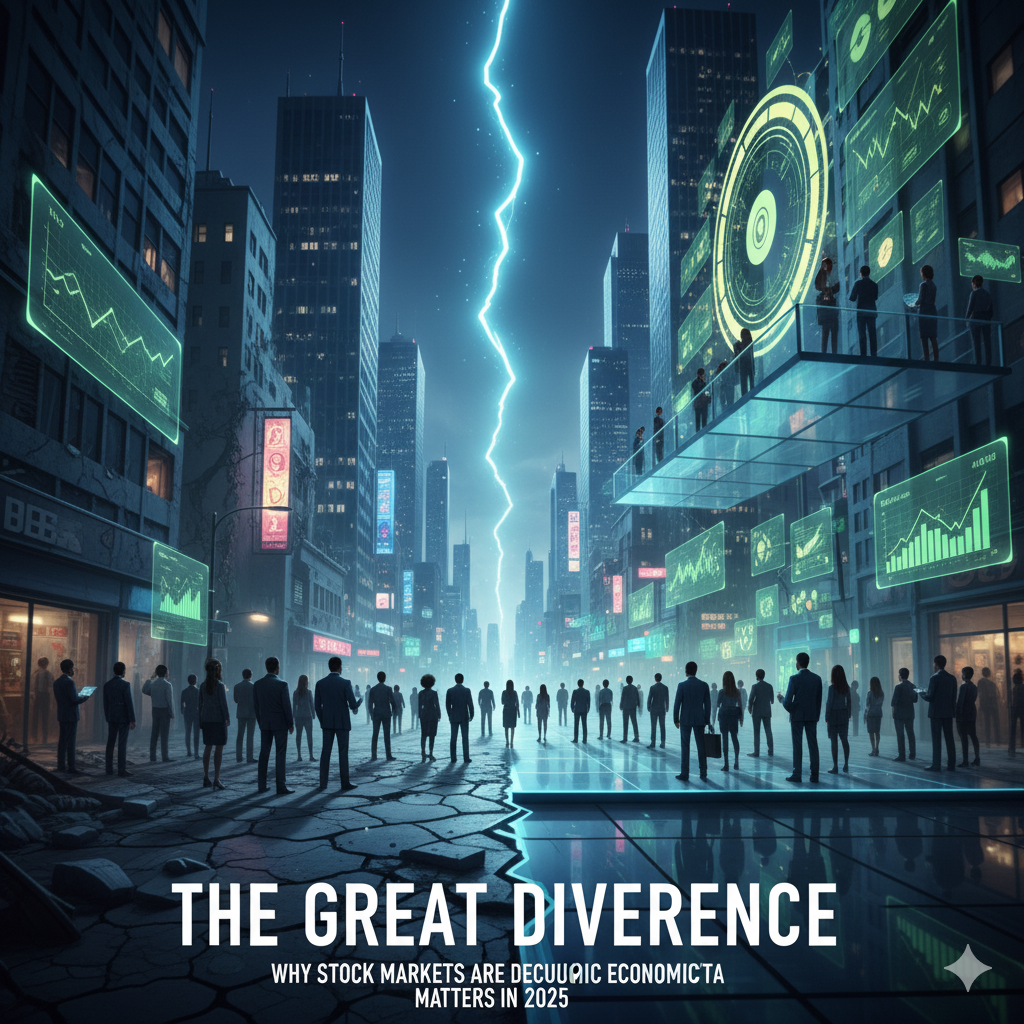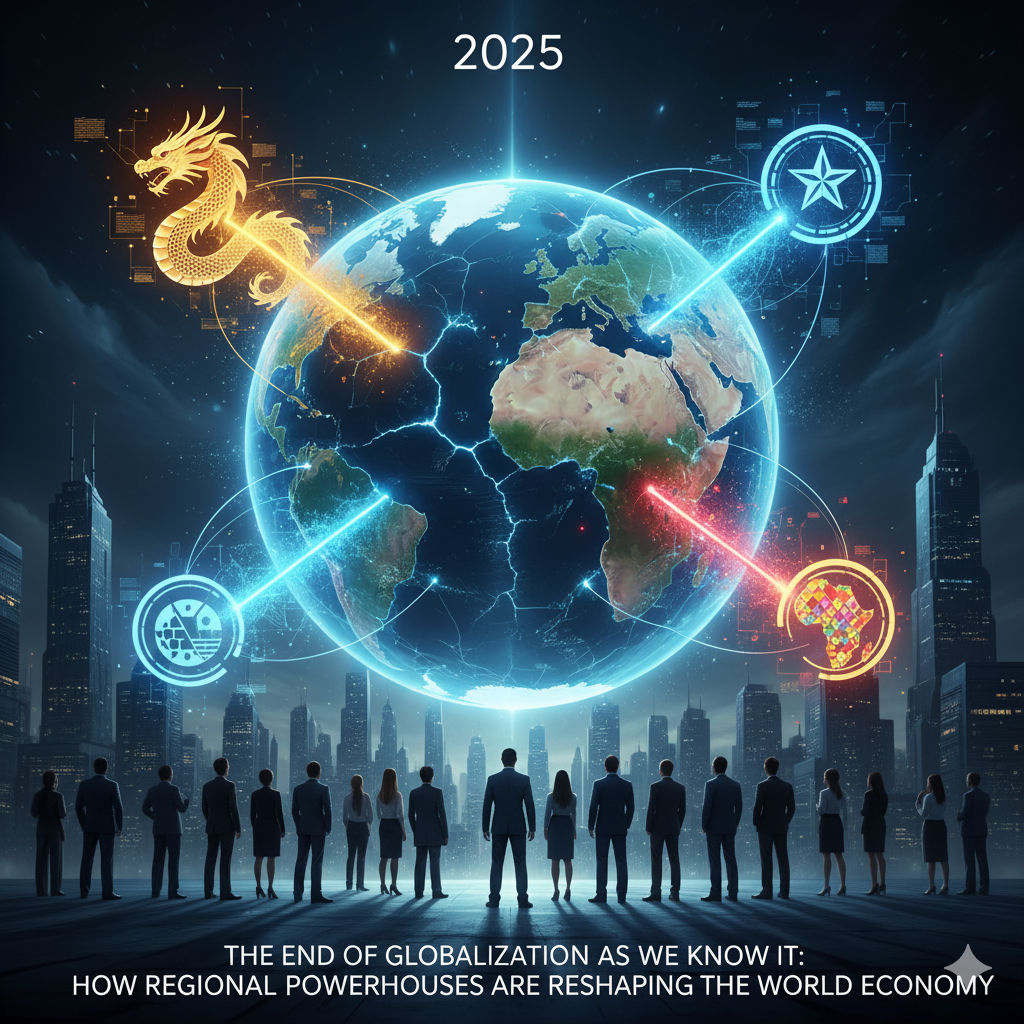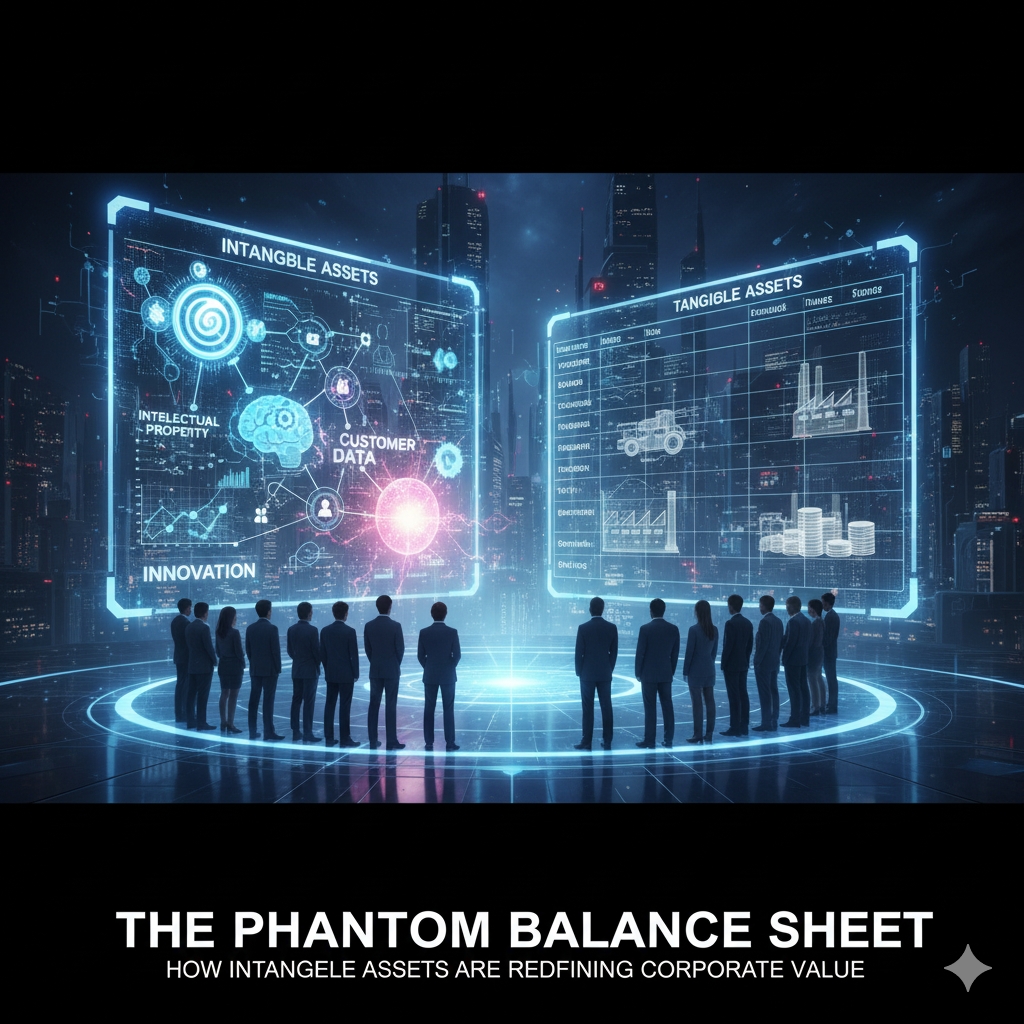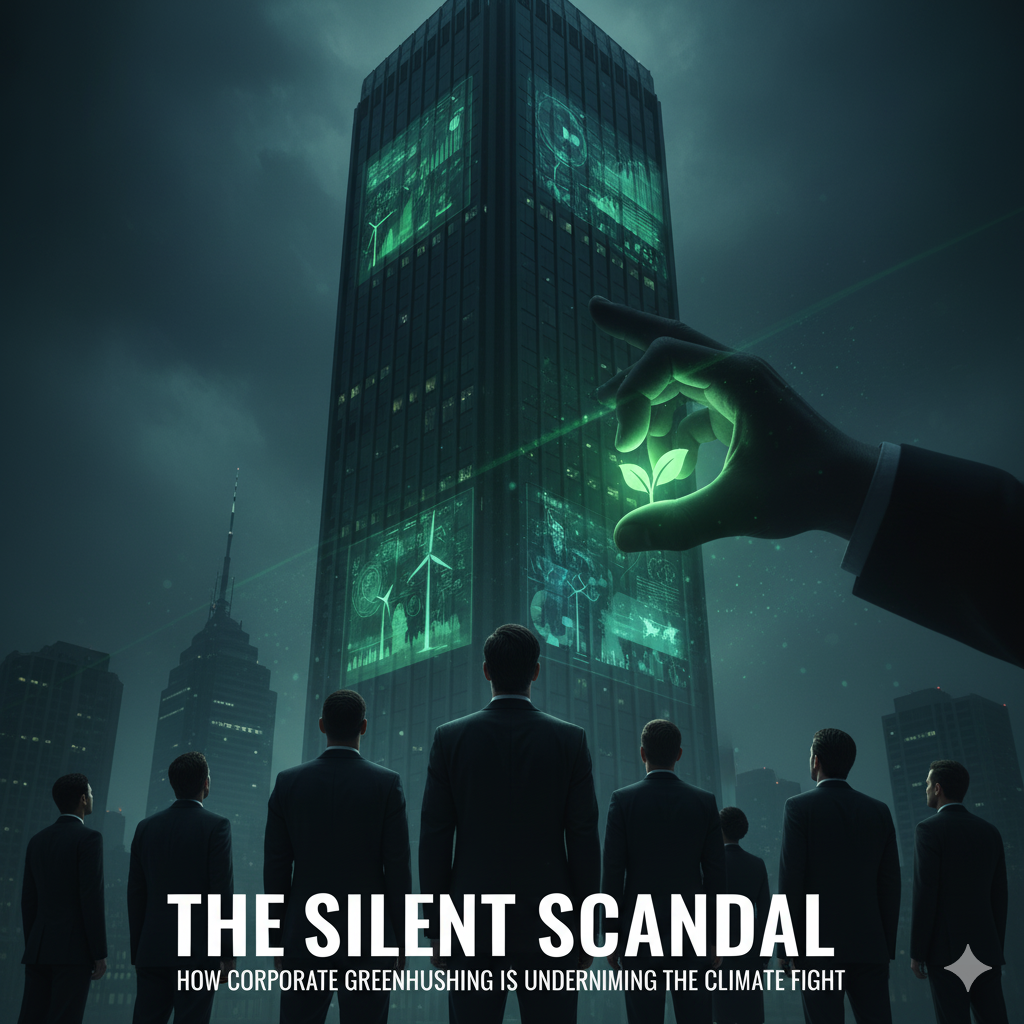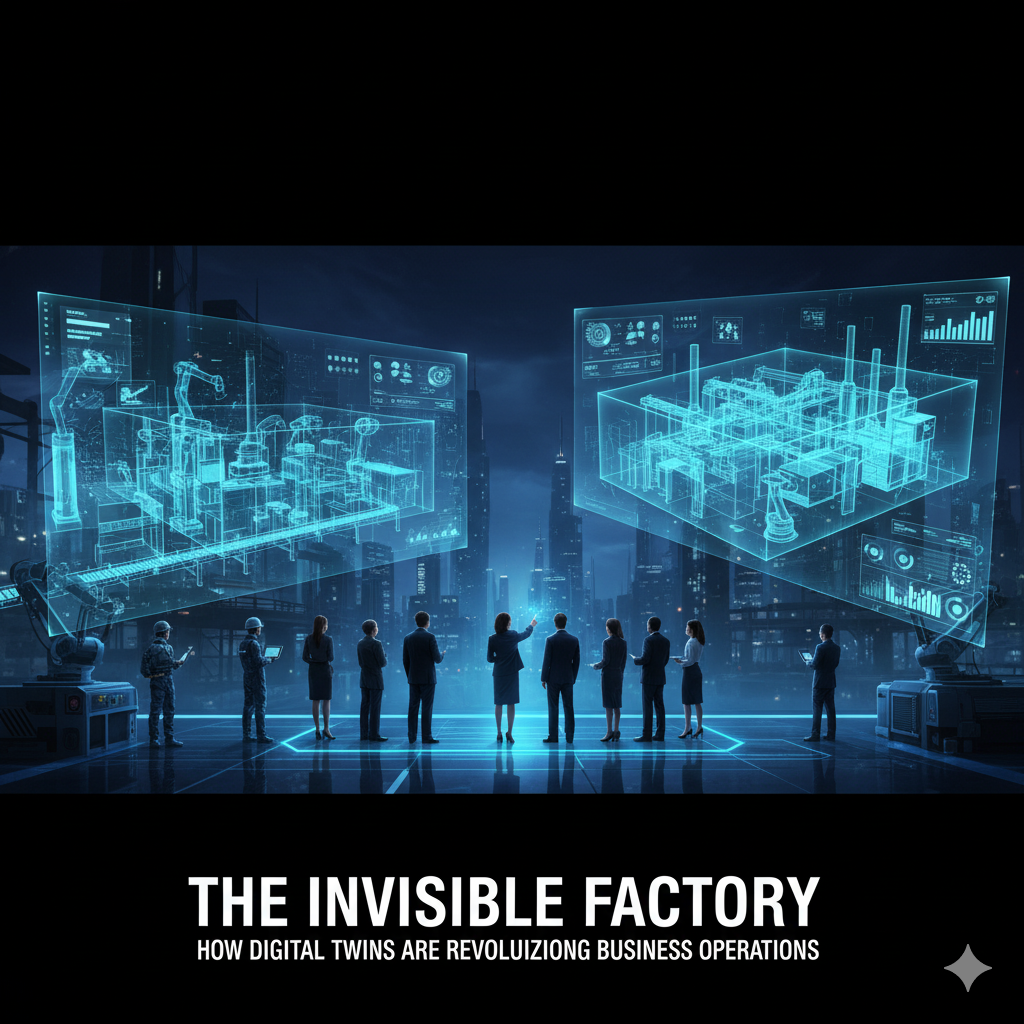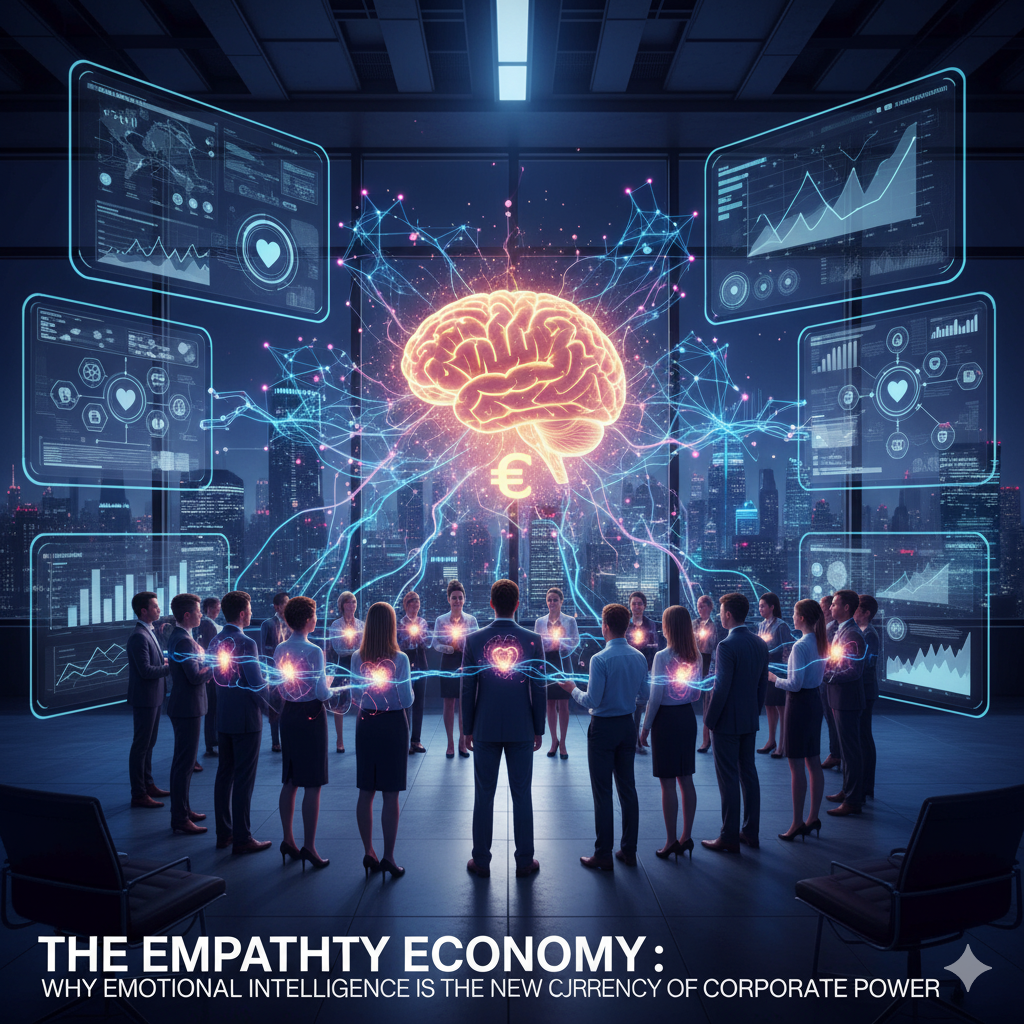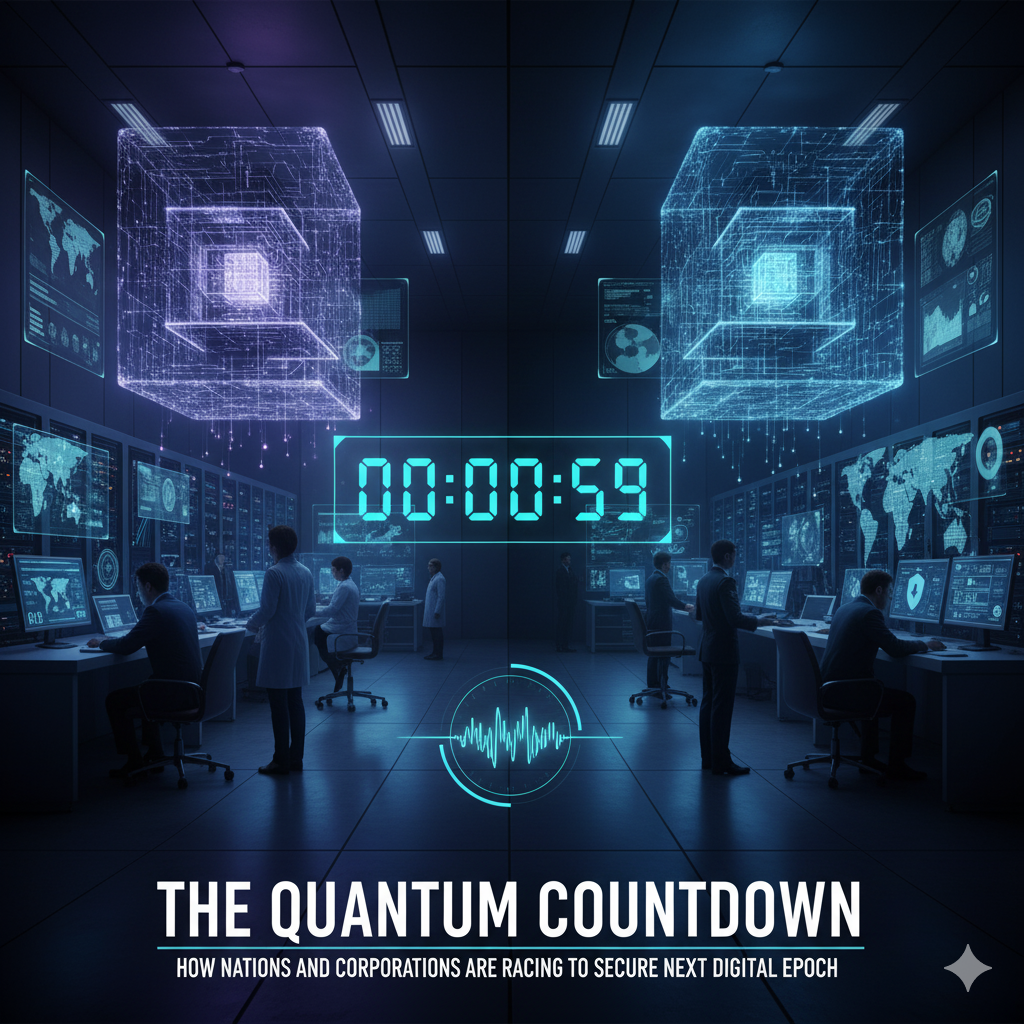A strange and unsettling phenomenon is defining the financial landscape of 2025. While headlines warn of slowing GDP growth, persistent inflation, and geopolitical turmoil, the S&P 500 and Nasdaq continue to scale unprecedented heights. This is not a typical bull market; it is The Great Divergence—a historic decoupling of financial markets from the underlying economic bedrock. For investors, this creates a perilous and confusing environment where traditional indicators are failing, and a new, more complex set of rules governs market behavior. Understanding this divergence is no longer an academic exercise; it is essential for navigating the most dislocated market in modern history.
The Three Pillars of the Disconnect
This market anomaly is not being driven by a single factor, but by a powerful confluence of three structural forces that have created a self-sustaining financial ecosystem, increasingly detached from Main Street.
The Liquidity Supernova: Central banks, having learned the lessons of 2008 and 2020, are now permanently “leaning against the wind.” Any sign of significant market stress triggers immediate intervention. While quantitative tightening (QT) is officially on the table, the “Fed Put”—the implicit guarantee of support—is perceived as stronger than ever. This has created a moral hazard of epic proportions, where investors are conditioned to “buy the dip” with the unwavering belief that central banks will not allow a systemic crash. Furthermore, sovereign wealth funds and corporate cash reserves, sitting on trillions of dollars, act as a perpetual bid for assets, flooding the system with liquidity that must find a home, regardless of economic fundamentals.
The AI and Productivity Mirage: The market’s valuation is increasingly concentrated in a handful of mega-cap technology companies driving the AI revolution. Stocks like NVIDIA, Microsoft, and Meta are being priced not on current earnings, but on the transformative potential of artificial intelligence to drive a future productivity boom. This narrative is so powerful that it is overshadowing current economic weakness. Investors are betting that AI will create such massive efficiency gains and new revenue streams that it will eventually pull the broader economy up to the market’s elevated expectations. It is a high-stakes gamble on a future that has not yet arrived.
The Passive Investing Feedback Loop: Over 50% of the U.S. stock market is now owned by passive funds (ETFs and index funds). This creates a powerful, mechanistic flow of capital that is indifferent to valuation or economic data. Every dollar invested in an S&P 500 ETF automatically buys more of the largest, most expensive stocks, driving their prices higher simply by virtue of their size, not their prospects. This creates a self-reinforcing cycle: rising prices attract more passive inflows, which push prices higher still. It is a virtuous circle on the way up, but a potential trap door on the way down, as outflows could become equally self-reinforcing.
The New Market Anatomy: A Tale of Two Economies
The phrase “the stock market is not the economy” has never been more true. We are now witnessing the rise of two distinct, parallel economies:
The Real Economy: This is the world of small businesses, manufacturing, and consumer sentiment. It is plagued by high borrowing costs, supply chain frictions, and stagnant real wages. Key indicators here include the ISM Manufacturing PMI, small business optimism indexes, and credit card delinquency rates, all of which have been flashing warning signs.
The Financial Economy: This is the world of large-cap equities, corporate buybacks, and institutional capital. It is buoyed by strong balance sheets in the tech sector, massive stock repurchase programs, and global capital seeking growth in a low-growth world. Its health is measured by corporate earnings (often boosted by cost-cutting, not revenue growth) and the flow of funds into risk assets.
The divergence is stark: while the real economy sputters, the financial economy soars, creating a dangerous perception gap between Wall Street and the everyday experience of most citizens.
The Concentration Conundrum: Hidden Risks in Plain Sight
The market’s ascent is built on an increasingly narrow foundation. The top 10 stocks in the S&P 500 now account for over 35% of the index’s total market capitalization, a level of concentration not seen since the dot-com bubble. This creates two massive, underappreciated risks:
Single-Stock Systemic Risk: The market has become a game of “Jenga.” If one of these mega-cap pillars, like Apple or Amazon, were to issue a significant earnings miss or face a major regulatory setback, the ripple effects could trigger a broad market sell-off disproportionate to the actual event. The sheer weight of these stocks in the indices means their fate is the market’s fate.
The Illusion of Diversification: An investor who believes they are “diversified” by owning an S&P 500 index fund is, in reality, making a concentrated bet on the performance of a few tech giants. The remaining 490 stocks have a diminishing impact on the portfolio’s return. This undermines the core principle of risk management and leaves passive investors dangerously exposed to a sector-specific downturn.
The Investor’s Dilemma: Navigating the Dislocation
For active investors, this environment presents a near-impossible choice: participate in an expensive, narrowly-led market driven by narrative, or stay on the sidelines and risk catastrophic underperformance. There is no easy answer, but sophisticated players are adopting several key strategies:
Factor-Based Tilting: Moving beyond plain vanilla index funds to strategies that tilt toward factors like value, low volatility, and quality. This can help reduce exposure to the most overvalued, momentum-driven segments of the market.
A Barbell Approach: Allocating a portion of the portfolio to the high-growth, high-valuation “story stocks” to maintain participation, while balancing it with a significant allocation to uncorrelated assets like certain commodities, managed futures, or tactical cash. This provides a hedge against a sudden narrative shift.
Rigorous Bottom-Up Analysis: In a top-down driven market, there is opportunity in the forgotten corners. This involves deep, fundamental research on mid- and small-cap companies that are trading at reasonable valuations but are being ignored by the passive flows. Their day will come when the market rotation finally occurs.
Increased Cash Reserves: Holding a higher-than-usual cash position is no longer a sign of fear, but of strategic patience. It provides dry powder to deploy during the inevitable, and likely violent, volatility spikes that characterize divergent markets.
Case Study: The 2024 “Rolling Correction”
A telling feature of this cycle has been the “rolling correction.” While the major indices marched higher throughout much of 2024, beneath the surface, different sectors were being brutally repriced. Speculative tech stocks, profitless innovation companies, and many small-caps experienced bear markets, falling 40-60%, even as the S&P 500 hit new highs. This was a stealthy, sector-specific cleansing that the headline indices completely masked. It served as a warning that the market’s strength was illusory for a vast number of companies, and that the divergence was not just between Wall Street and Main Street, but within Wall Street itself.
Strategic Outlook: The Inevitable Reckoning and the New Normal
Divergences cannot persist forever. They are always resolved, either by the market falling to meet the economy, or the economy rising to meet the market. The critical question is which scenario will unfold.
Scenario A: The Hard Landing (Market Down, Economy Down): The most feared outcome. Sticky inflation forces central banks to maintain restrictive policies for longer, finally triggering the recession that has been delayed. Corporate earnings collapse, the AI narrative fades as results fail to meet hype, and the passive-investing feedback loop reverses violently, leading to a severe and correlated market crash.
Scenario B: The Soft Convergence (Market Sideways, Economy Up): The “goldilocks” scenario. The economy successfully navigates a soft landing, inflation normalizes, and the AI productivity boom gradually materializes, allowing corporate earnings to grow into their current valuations. This would result in a prolonged period of market consolidation or muted returns, rather than a crash.
Scenario C: The Great Acceleration (Market Up, Economy Up): The optimistic outcome. The AI revolution delivers on its promise faster and more broadly than anticipated, creating a tidal wave of productivity that lifts all economic boats. In this world, today’s high valuations would be seen in hindsight as a bargain.
Conclusion: Prudence in the Age of Irrationality
The Great Divergence is a testament to the power of liquidity, narrative, and structural change. While it is dangerous to fight the tape, it is equally dangerous to ignore the glaring warning signs. The current market is built on a narrow and fragile foundation.
The savvy investor in 2025 must therefore be a realist, not just an optimist or a pessimist. This means maintaining exposure to participate in the upside while building robust defenses for the inevitable reckoning. It means looking beyond the headline indices to the underlying health of the market. And most importantly, it means understanding that in the Great Divergence, the old rules are suspended, and the only constant is the imperative of disciplined, active risk management. The market can remain irrational longer than you can remain solvent, but it cannot do so forever. Your strategy must be built for both the irrationality and the eventual return to reality.

